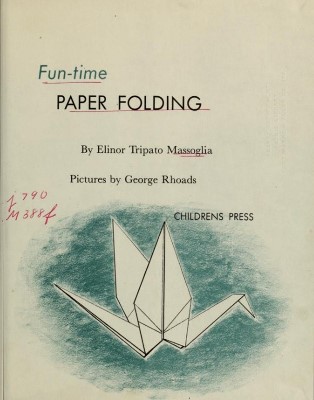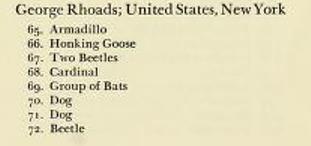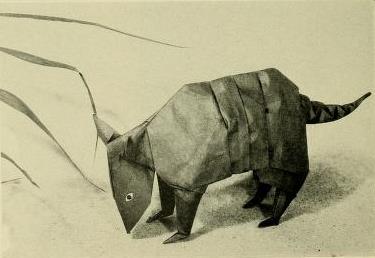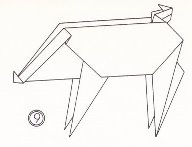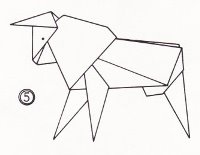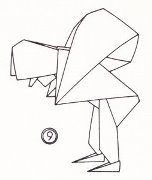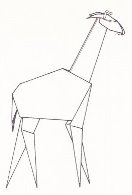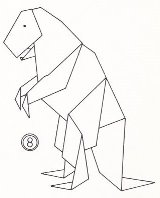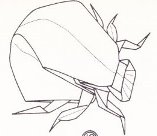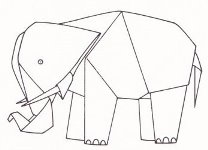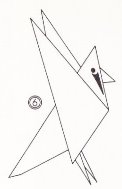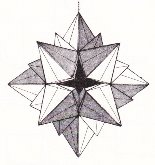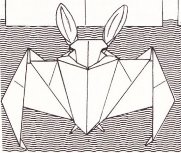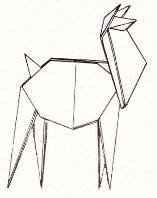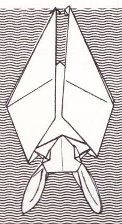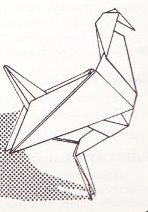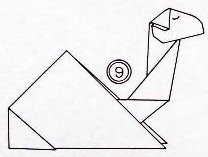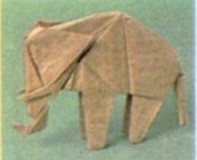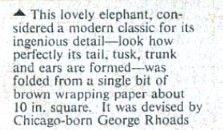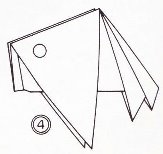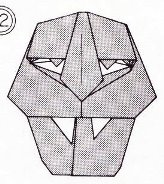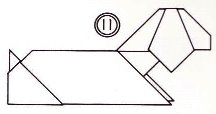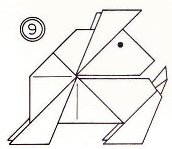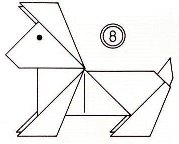| The Public Paperfolding History Project
Last updated 13/2/2024 x |
|||||||
| The Paperfolding of George Rhoads | |||||||
This page is being used to collect information about the paperfolding of George Rhoads (1926 to 2021) but is not intended to be a complete or formal history. ********** Introduction George Rhoads was born in Evanston, Illinois, in 1926. He studied physics and mathematics at the University of Chicago, then began taking design and drawing classes at Chicago's Art Institute. Two years later he moved to New York City to become a painter. His work focused on portraits and impressionistic cityscapes, but he was not critically or financially successful. Chronology 1952 According to George Rhoads biography on the website George Rhoads: 'Rhoads’ first solo show was held at the Gallery Huit in Paris and contained mostly watercolor paintings of Paris and surrounding environments. At this exhibit, Rhoads met Origami expert Gershon Legman, who inspired him to start creating folds of his own'. Wikipedia gives the date that Rhoads moved to Paris as 1952. ********** 1955 In a letter written on 8th April 1955 Gershon Legman told Robert Harbin that Rhoads had invented the blintz bird base and had succeeded in making from it a number of animals that had four feet, and all other necessary parts, without needing to use any cuts (information from letter held in the archives of the Museo del Origami in Colonia, Uruguay), including his famous Elephant, which had not only four legs, head, trunk, ears and tail but also tusks, and was a remarkable design for its time. ********** 1958 Issue 2 of 'The Origamian', published in November 1958, lists George Rhoades (sic). as being among those whom Lillian Oppenheimer has made 'Honorary Members' of the Origami Center. *** Volume 1, Issue 5 of The Origamian for March 1959 contained mention of 'G Rhoades (sic) inimitable and intricate dog'. ********** 1959 George Rhoads is credited with illustrating 'Fun-time Paper Folding' by Elinor Tripato Massoglio, which was published by Childrens Press in Chicago in 1959.
********** According to the exhibition catalogue, Rhoads contributed a number of designs to the 'Plane Geometry and Fancy Figures' exhibition held at the Cooper Union Museum in New York in the Summer of 1959, one of which, his Armadillo, was featured in a photograph.
***
Armadillo ********** 1961 'The Art of Origami' by Samuel Randlett was published by E P Dutton in New York in 1961, contained a (three-legged) 'Longhorn Bull' attributed to Rhoads. ********** 1963 'The Best of Origami' by Samuel Randlett, which was published by E P Dutton in New York in 1963 and by Faber and Faber Ltd in London in 1964, contained the following biographical details:
And diagrams for a number of Rhoads' original designs: Piglet
********** Bull
********** Fardel Bearer
********** Giraffe (Cut)
********** Tyrannosaurus Rex
********** Bug
********** Elephant
********** Cardinal
********** 1964 'Secrets of Origami', by Robert Harbin, which was published by Oldbourne Book Company in London in 1964, contained diagrams for a number of Rhoads' designs: Rhoad's Ornament A glued modular 3D star
********** Rhoad's Bat
********** Rhoad's Llama From an irregular shape
********** Sleepng Bat
********** Turkey
********** 1969 Rhoads' 'Camel' appeared in Issue 4 of the Flapping Bird:
********** 1970 A photograph of Rhoads' 'Elephant' appeared in an article by Robert Harbin in Woman's Own magazine of March 1970.
********** Rhoads' 'Tropical Fish' appeared in Issue 10 of the Flapping Bird:
********** 1971 Rhoads' 'Fanged Mask' appeared in Issue 14 of the Flapping Bird:
********** 1974 Three more of Rhoads' designs appeared in Issue 24 of the Flapping Bird: Lamb
********** Conservative Puppy
********** Progressive Puppy The text adds that 'George Rhoads adds eyes to these twin puppies.'
********** |
|||||||
